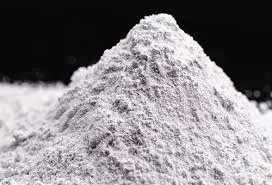
Nov . 17, 2024 04:08 Back to list
mhec-methhyl hydroxyethyl cellulose factory
The Role of Methyl Hydroxyethyl Cellulose in Modern Industries
Methyl Hydroxyethyl Cellulose (MHEC) is a cellulose derivative that plays a crucial role in many industrial applications. Its unique properties make it an essential ingredient in the formulation of various products across numerous sectors, including construction, pharmaceuticals, food, and cosmetics. This article delves into the significance of MHEC, its properties, manufacturing processes, and applications in different industries.
Understanding MHEC
MHEC is synthesized from cellulose, a natural polymer derived from plant material. The process involves the etherification of cellulose with methyl and hydroxyethyl groups, enhancing its solubility and modifying its functional properties. The resulting product is a white, odorless powder that is soluble in cold water, forming a clear, viscous solution.
The molecular structure of MHEC allows it to create a gel-like consistency, which is highly valued in various formulations. Furthermore, it is non-toxic and biodegradable, making it suitable for eco-friendly products. Its unique features, such as high water retention, strong binding capabilities, and excellent film-forming properties, contribute to its widespread use in different industries.
Manufacturing Process
The manufacturing of MHEC generally involves several key steps
1. Cellulose Extraction The first step in producing MHEC is sourcing cellulose, typically obtained from wood pulp or cotton. This natural material serves as the raw substrate for further processing.
2. Etherification In this step, the extracted cellulose is treated with etherifying agents, like methyl chloride and ethylene oxide, under controlled conditions. This chemical reaction introduces methyl and hydroxyethyl groups into the cellulose structure.
3. Purification and Drying Once the etherification process is complete, the product undergoes purification to remove any unreacted chemicals and by-products. The result is then dried to obtain a fine powder.
mhec-methhyl hydroxyethyl cellulose factory

4. Quality Control Throughout the manufacturing process, stringent quality control measures are implemented to ensure the consistency and performance of MHEC.
Applications of MHEC
MHEC is utilized across various industries due to its versatile properties
1. Construction Industry In construction, MHEC is a key component in dry-mix mortars, such as tile adhesives and plaster. It enhances workability, aids in water retention, and improves the adhesion of the mixtures to surfaces. MHEC extends the open time, allowing workers more flexibility during application.
2. Pharmaceuticals MHEC serves as a binder and an excipient in tablet formulations. Its ability to provide controlled release of active ingredients is crucial for developing sustained-release medications. Additionally, MHEC is used in ophthalmic solutions to enhance viscosity and maintain moisture.
3. Food Industry As a food additive, MHEC acts as a thickening agent, stabilizer, and emulsifier. It is commonly found in sauces, soups, and dairy products, providing desirable textures and enhancing mouthfeel. Being non-toxic and food-grade, MHEC is an ideal choice for various culinary applications.
4. Cosmetics In cosmetics and personal care products, MHEC is used as a thickener and film-forming agent. It stabilizes emulsions like creams and lotions, improving their texture and spreadability. Moreover, MHEC helps in retaining moisture, making it a popular choice in skincare formulations.
Conclusion
Methyl Hydroxyethyl Cellulose represents a remarkable advancement in the field of cellulose derivatives, offering a wide range of applications due to its enhanced functional properties. As industries continue to innovate and move toward more sustainable practices, the demand for MHEC is likely to grow. Its versatility, safety, and performance make it a valuable ingredient in modern formulations across diverse sectors. The continued development of MHEC production technologies will further cement its status as an essential compound in both commercial and industrial applications, showcasing the importance of this remarkable material in our daily lives.
-
Versatile Hpmc Uses in Different Industries
NewsJun.19,2025
-
Redispersible Powder's Role in Enhancing Durability of Construction Products
NewsJun.19,2025
-
Hydroxyethyl Cellulose Applications Driving Green Industrial Processes
NewsJun.19,2025
-
Exploring Different Redispersible Polymer Powder
NewsJun.19,2025
-
Choosing the Right Mortar Bonding Agent
NewsJun.19,2025
-
Applications and Significance of China Hpmc in Modern Industries
NewsJun.19,2025







